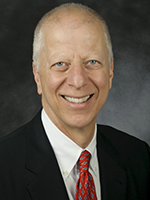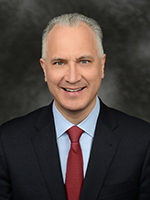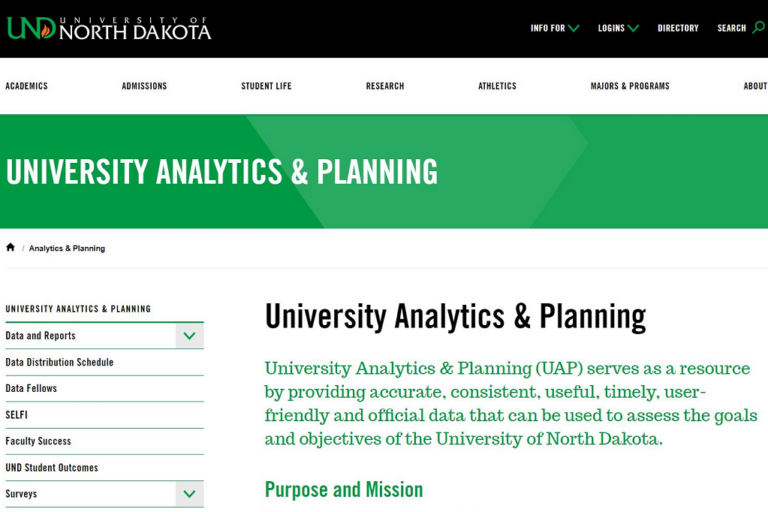Class above
UND Final Fall 2018 enrollment confirms most diverse freshman class ever as well as one of the most academically-prepared

The University of North Dakota continues to attract its share of the best and brightest to Grand Forks, according to final fall enrollment figures.
As of today (Sept. 18), the official census day for the fall semester, UND has once again enrolled its most ethnically diverse and one of the most academically-prepared cohorts of freshmen to date, based on average high school ACT scores. The new freshman class of 1,835 is checking in, this fall, with an average ACT score or 23.9, just a tick below the highest ever average class score of 24.0. In fact, this year’s freshman class includes two students, Taylor Roehl, of New Leipzig, N.D.; and Carl Quandt, Annandale, Minn., who aced their individual ACTs. In recent memory, the University hasn’t had two incoming freshmen with perfect scores on their ACTS.
The class also has the most UND Presidential Scholars in the University’s history at 254, and more than 161 Honors Program students (a 21 percent increase over last fall).
It’s also UND’s most diverse group of incoming freshmen, as 14.4 percent of the incoming freshman class reported as an ethnicity other than white/caucasian, another all-time high in UND’s 135-year history, and a 2 percent increase over last fall.
UND’s John D. Odegard School of Aerospace Sciences and the College of Arts & Sciences saw the biggest increases in freshmen students at 24 percent and 19 percent, respectively.
UND also is seeing encouraging trends in the number of students enrolling from other colleges and universities. This after the University implemented a number of new strategies to streamline the transfer process. The final count for Fall 2018 shows UND attracted 721 transfer students, up nearly 6 percent over last year. And if one includes students who transferred to UND over the summer, there are more than 900 transfer students at UND for their first fall semester.
Over the past year, UND also has beefed up its advertising and marketing significantly and implemented a new mobile-friendly website, but a payoff in enrollment increases from those efforts likely won’t be seen until next fall.

Research push
UND also is adjusting to two planned-for variables that are impacting enrollment numbers in the short term:
- Last year, UND busted a number of barriers to graduation, including reducing the number of credits most undergraduate students need to graduate. The change put UND in line with most other universities and colleges. Because of the change, many students – nearly 350 who otherwise would have been back this semester — were able to graduate in four years, and did so this past spring and summer (reducing continuing enrollment by a comparable amount). This change also played a role in a nearly 6-percent surge in the number of students who were able to attain their degree in five years. Another indication that UND students are progressing toward graduation faster and more efficiently is that, on average, they are enrolled in more credit hours this fall than they have been since 2011 (enrollment was nearly 14,700 students that year).
- Another planned-for change is that UND is now investing more to attract doctoral students, who tend to play a large role in helping faculty conduct research. This shift in resources to doctoral students and away from master’s degree students will take time to ramp up and likely won’t translate into enrollment increases for a while.
The University is concentrating on attracting more doctoral students to energize and bolster its research capabilities, an important tenet of the One UND Strategic Plan.
University leaders also anticipate that recruiting more doctoral students could have an ancillary benefit to the Greater Grand Forks community, since doctoral students will be more likely to have families and to live in the community in apartments and houses.
Quality over quantity

Overall, this fall’s total enrollment remained relatively stable with 13,847 students, a slight dip (3.9 percent, or 1.2 percent, adjusting for change to 120 credits needed to graduate) from last fall’s final enrollment of 14,406. Still, even with the decrease, this year’s final tally ranks within the top 10 of highest overall enrollments at UND.
A deeper analysis reveals UND has been part of a national trend that’s seen overall enrollments decrease across the United States over the past six years. UND’s highest enrollment was in 2012, when the overall student count ballooned by nearly 600 students to 15,250. This past spring, UND said good-bye to the last of that big enrollment bubble through graduation.
“We decided a long time ago to put much more energy into increasing the quality of students attending UND, and by all indications, the final fall enrollment numbers show that strategy is paying off,” said Thomas DiLorenzo, provost and vice president for academic affairs at UND. “As such, we anticipated having a dip in enrollment as the larger classes graduated and smaller, yet stronger academic, classes enrolled.”
Looking at where some of the students are coming from, UND posted its highest-ever headcounts from six states: Nevada, Missouri, Arizona, Kansas, Colorado and Hawaii.
By the numbers
Overall, UND’s graduate enrollment is at 2,785 including 2,021 master’s students and 648 doctoral students.
UND’s professional programs, the four-year M.D. program in the School of Medicine and Health Sciences and School of Law, are holding steady at a combined 543 students.
Other undergraduate student enrollment (non-freshmen) is at 7,963.
In Fall 2017, UND final enrollment showed 2,862 graduate students, 544 professional students, and 8,374 non-freshman undergrads.

The right thing
UND President Mark Kennedy said all of the changes, even if they impact enrollment temporarily, are simply the right things to do. He noted that recruiting better-prepared new students helps UND meet expectations for retention and boosting graduation rates, while attracting top-notch doctoral students raises the University’s research profile and ability to support important work for the state and nation.
“My goal has always been for UND be a place that attracts the best and brightest,” Kennedy said. “Recruiting these kinds of students will go a long way in helping UND remain the premier flagship University on the Northern Plains.”


